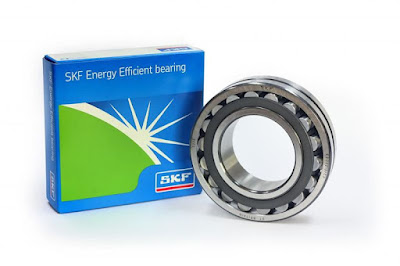How do you avoid damage when heating a bearing while reducing your operating costs?
Heating a bearing can be a complex process that can incur costly damage to the machinery and equipment in use. However, this process is often necessary to ensure proper installation, disassembly, or maintenance of the bearing. In this blog post, we will discuss the best practices for avoiding damage while heating a bearing, as well as effective ways to reduce operating costs. It is crucial to understand the different factors that contribute to the potential damage that could occur when heating a bearing, including the method used, heat temperature, and duration of the process. Furthermore, there are ways to minimize these risks, such as using regular maintenance checks and selecting the optimal heating method for the specific bearing. Reducing operating costs is also an essential aspect of bearing heating. By minimizing the time and energy required for the process and extending the bearing's lifespan, operating costs can be significantly reduced. We will explore different strategies to achieve this, including using efficient heating equipment and developing a comprehensive maintenance plan. By implementing these techniques, equipment
1. Use the proper heating equipment and techniques to avoid damage to the bearing
Proper heating techniques are crucial when heating bearings to avoid damage and reduce operating costs. In order to achieve the desired result, it is essential to use the appropriate heating equipment and techniques. Careful attention should be paid to the size of the bearing being heated to ensure that the proper heating equipment is selected. Overheating or uneven heating can cause permanent damage to the bearing, leading to costly repairs or replacement. It is recommended to use an induction heating method since it provides a safe, clean, and efficient way to heat the bearing. Additionally, it is crucial to follow the manufacturer's recommended heating temperature and time to avoid damaging the bearing. Properly heating a bearing can help to extend its lifespan, reduce operating costs, and prevent downtime due to equipment failure.
2. Ensure that the bearing is clean and free of contaminants before heating
When heating a bearing, it is crucial to ensure that it is clean and free of any contaminants before applying heat. Failure to do so can result in damage to both the bearing and the surrounding components. Contaminants such as dirt, debris, and grease can cause the bearing to become brittle and prone to cracks or fractures when exposed to high temperatures. Additionally, excess grease or lubricant can cause the bearing to overheat and damage the surrounding parts. Therefore, it is recommended to carefully inspect and clean the bearing thoroughly before heating, in order to prevent any potential damage and reduce overall operating costs.
3. Use the correct temperature and heating time to avoid overheating and damage
When heating a bearing, it is important to use the correct temperature and heating time in order to avoid overheating and damage. Overheating can cause irreversible damage to the bearing and may result in costly repairs or replacements. To avoid this, it is important to follow the manufacturer's recommended temperature and heating time guidelines. Additionally, it is important to use a reliable and accurate temperature monitoring device to ensure that the bearing does not exceed its rated temperature. By taking these precautions, you can reduce your operating costs by avoiding the expenses associated with bearing damage and replacement.
4. Consider using induction heating, which is more efficient and cost-effective than traditional heating methods
One effective strategy for reducing operating costs when heating a bearing is to consider using induction heating. Induction heating is more efficient and cost-effective than traditional heating methods, such as open flame or hot oil, because it uses an electromagnetic field to generate heat directly within the metal component being heated. This results in faster and more precise heating, as well as increased energy efficiency, with less energy wasted as heat is not being radiated to the surrounding environment. Additionally, induction heating can reduce the risk of damage to the bearing due to overheating or improper heating patterns, as it enables more precise temperature control. Therefore, it is important for manufacturers and maintenance professionals to consider the benefits of induction heating when operating and heating bearings, to optimize their processes and minimize costs.
5. Always follow the manufacturer's instructions and recommendations for heating bearings to reduce the risk of damage and ensure optimal performance.
When heating a bearing, it is of utmost importance to follow the manufacturer's instructions and recommendations. This is essential to reduce the risk of damage and ensure optimal performance. Heating a bearing incorrectly can result in catastrophic failure, leading to unexpected downtime and increased operating costs. The recommended heating methods, temperature ranges, and heating times should be strictly followed to maximize bearing life and prevent premature failure. By adhering to the manufacturer's guidelines, you can avoid damage when heating a bearing and reduce your operating costs in the long run.
To sum up, heating a bearing is an important process that should not be overlooked. It is necessary to ensure that the bearing is heated properly and evenly to prevent any damage that could be caused by thermal shock. By using the right method and tool, such as an induction heater, you can avoid any risk of damage to your bearings and maintain the longevity of your equipment with the added benefit of reducing operating costs in the long term. Remember to always follow the manufacturer's instructions and guidelines to ensure that you are using the right heating process for your bearings.



Megjegyzések
Megjegyzés küldése